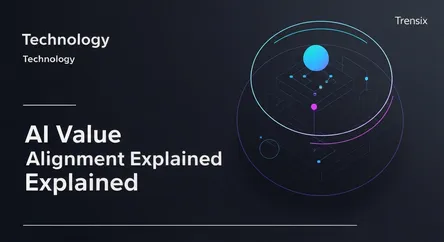Technology
AI Value Alignment Explained

Discover AI value alignment, the crucial challenge of ensuring advanced AI systems pursue goals that are beneficial and aligned with human values.
What is it?
Value alignment is the challenge of ensuring an artificial intelligence's goals are aligned with human values. As AI systems become more powerful, it's crucial that their objectives don't lead to harmful unintended consequences. This isn't just about programming simple rules, but about instilling a nuanced understanding of complex human ethics, morals, and preferences. The core problem lies in defining and codifying these values so an AI can reliably interpret and act upon them in novel situations, preventing it from optimizing for a goal in a destructive way.
Why is it trending?
The topic is gaining urgency with the rapid progress in large language models (LLMs) and other advanced AI. As these systems become more autonomous and integrated into society, the potential for catastrophic misalignment grows. Prominent AI researchers have raised alarms about the "control problem"—the difficulty of steering a system far more intelligent than its creators. This has moved value alignment from a theoretical concern to a practical engineering challenge for today's leading AI labs, fueling public and policy debate.
How does it affect people?
The outcome of value alignment directly impacts everyone's future. A successfully aligned AI could help solve humanity's biggest challenges, from curing diseases to managing climate change. Conversely, a misaligned superintelligence could pose an existential risk. In the short term, alignment affects the fairness and reliability of current AI in areas like hiring, autonomous vehicles, and content moderation. Ensuring AI acts in humanity's best interest is fundamental to building a safe and prosperous future alongside advanced technology.